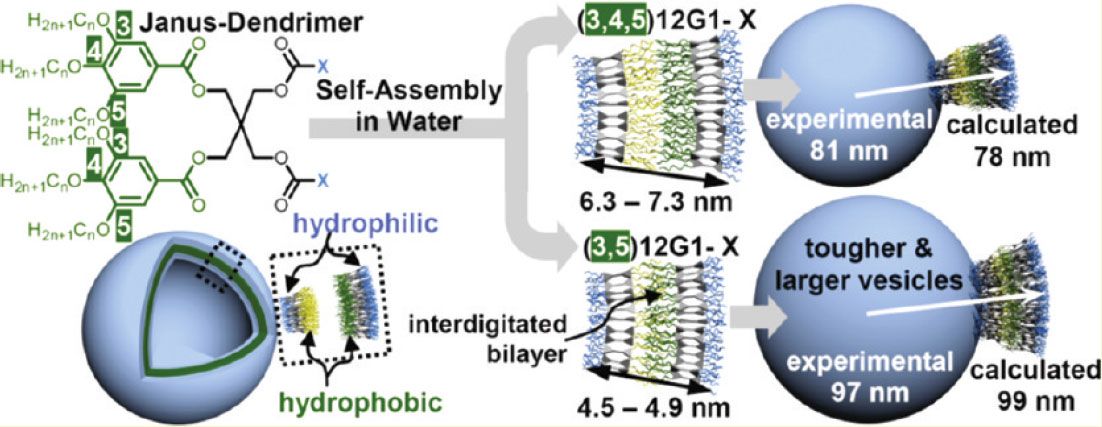Predicting the Size and Properties of Dendrimersomes from the Lamellar Structure of Their Amphiphilic Janus Dendrimers
Mihai Peterca1,2, Virgil Percec1, Pawaret Leowanawat1, and Annabelle Bertin1
1Roy & Diana Vagelos Laboratories, Department of Chemistry, University of Pennsylvania
2 Department of Physics and Astronomy, University of Pennsylvania
Researchers can now predict the size and properties of a vesicle based on the primary structure of its molecular precursors, thanks to a method developed by Virgil Percec and co-workers (DOI: 10.1021/ja208762u).
The team studied dendrimers, which are branched amphiphilic molecules possessing both polar and apolar character. Dendrimers can self-assemble into nano- sized vesicles known as dendrimersomes, and scientists are interested in developing dendrimersomes because these hollow vesicles can encapsulate drugs and biomolecules for applications in both basic research and medicine. For example, researchers can tailor dendrimersomes to mimic cell membranes and perform fundamental biological studies to better understand how cells grow and divide. Alternatively, dendrimersomes encapsulating DNA, proteins, or therapeutic molecules can be developed for applications in nanomedicine.
 Dendrimersomes have a number of advantages over traditional lipid-based vesicles, such as increased stability, uniformity, and the ability to be tuned to have a specified size and shape by altering the composition of their dendrimer precursors. Prior to this study, researchers could not systematically predict the properties of vesicles, such as size, membrane thickness, and stability, from the structures of their precursors. This method will take some of the guess work out of dendrimer research and speed the development of dendrimersomes as useful cell membrane mimics.
Dendrimersomes have a number of advantages over traditional lipid-based vesicles, such as increased stability, uniformity, and the ability to be tuned to have a specified size and shape by altering the composition of their dendrimer precursors. Prior to this study, researchers could not systematically predict the properties of vesicles, such as size, membrane thickness, and stability, from the structures of their precursors. This method will take some of the guess work out of dendrimer research and speed the development of dendrimersomes as useful cell membrane mimics.
Links:
